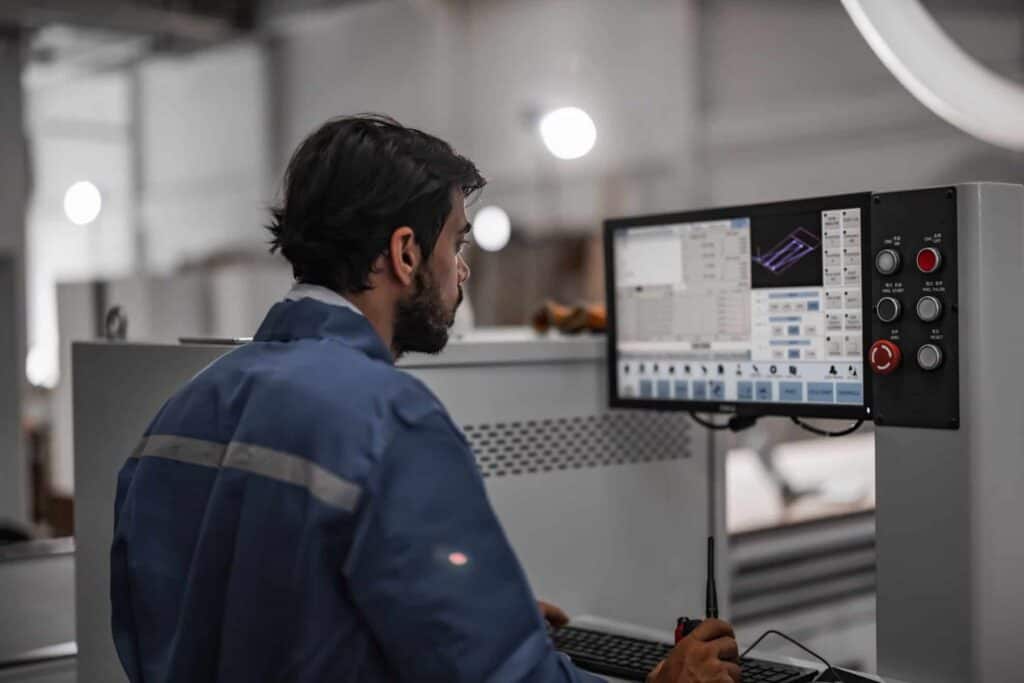Is software saving you time, or adding to your workload? If you feel it could be the latter, it might be time for business owners to conduct their own software audit.
If you’ve ever worked in, managed, or owned your own laser cutting job shop, you’ll know there is a huge range of software out there designed to help you do your job better, faster, and more efficiently.
When software is implemented and utilised successfully, it’s brilliant. It can take time-consuming manual tasks and turn them into some simple clicks of a button.
But if it is under-utilised, or just left in the background, software could be adding more time, rather than saving it, and that can hurt business productivity, efficiency, and the bottom line.
Software audits – what to look for
As a business grows, it can be highly worthwhile for owners and managers to conduct an in-depth software audit, to make sure you’re using these resources efficiently. Here’s what to look for:
- Are you using the software to its full benefit? So often people just use a few of the basic functions, and don’t realise the software is capable of so much more.
- Is there duplication of effort? Is someone doing it manually and then re-doing it via software? Or are workers having to do the same task across multiple different software programs? Look out for these counterproductive inefficiencies.
- Does your software talk to other software? If so, it can create a highly efficient business workflow, but if not, it can sometimes create more work than it saves, because employees have to go to great efforts to transfer data from one software to another.
- Is the software up to date? If you’ve paid for software, it’s important to keep it updated so that you can capitalise on the latest features and benefits, as well as keep it secure and functioning optimally, without bugs or errors.
- Do you need all of these software programs? Sometimes, as technology advances, a new program is capable of performing multiple functions, which renders an old software obsolete, but this can go unnoticed. Worse, workers can stop using a software, but the business might still be paying the subscription fee. (In fact, according to a new working paper from researchers at Stanford and Texas A&M submitted to the National Bureau of Economic Research, forgotten subscriptions can boost the revenue of the business selling that subscription by as much as 200%.)
Return on software investment
For any software to be beneficial to the business, it must increase efficiency and decrease workload. Sometimes it does this by doing a process faster and more simply, and sometimes it adds capabilities that were not previously practical or possible.
It is helpful if it integrates or communicates effectively with existing software, and it is ideal if you plan to utilise the majority of the features it offers. Then you will start to see the best value for money, and the best return on investment.
So often we hear comments like this one, which came from a customer, “Most software that job shop owners will come across is both really complicated and also expensive, with long implementation times. This means you’ll spend months only to find out it might not fit, but by this stage, you’ve invested the time, so you put up with it.”
We knew there had to be a better way.
ToolBox – the laser cutting job shop’s multi-functional software program
ToolBox, by Tempus Tools, is a multi-functional laser cutting quoting software that is provided using a SaaS (Software as a Service) model.
With more than 100 years of combined experience in its leadership team – extending from the job shop floor to the formation of entire laser cutting enterprises – Tempus Tools designed ToolBox to not only increase laser cutting quoting efficiency, but to integrate with other software programs, and to perform a range of functions in one, saving the need to purchase multiple subscriptions or programs.
ToolBox can:
- Split multi-file parts, delete unwanted paths, and perform other drawing issue corrections, which can remove the need to purchase a CAD software package in a lot of cases.
- Convert a vector PDF into a CAD file instantly, ready for quoting, removing the need for manual PDF conversion tools.
- Identify, extract, and unfold sheet-metal parts directly from 3D assemblies, which can remove the need to purchase a 3D software package (example pictured below).

- Quote tube and pipe parts, handling RHS and circular profiles, saving you from requiring dedicated tube software.
- Offer an online quoting portal for a job shop’s customers, removing the need for simple e-stores or complex custom software development (with credit card payments and additional secondary processes coming soon).
- Produce production documentation, like work orders, delivery dockets, and part labels, removing the need for expensive production management systems.
- Integrate with external applications, including accounting systems like Xero and QuickBooks.
Next in line for development is multi-part nesting, which will remove the need for separate expensive nesting software.
The Tempus Tools development team is constantly using customer feedback to develop new features and new integrations to benefit more job shops.
To learn more about ToolBox, by Tempus Tools, please click here.
Author: Bruce Thomas, Executive (Product)






